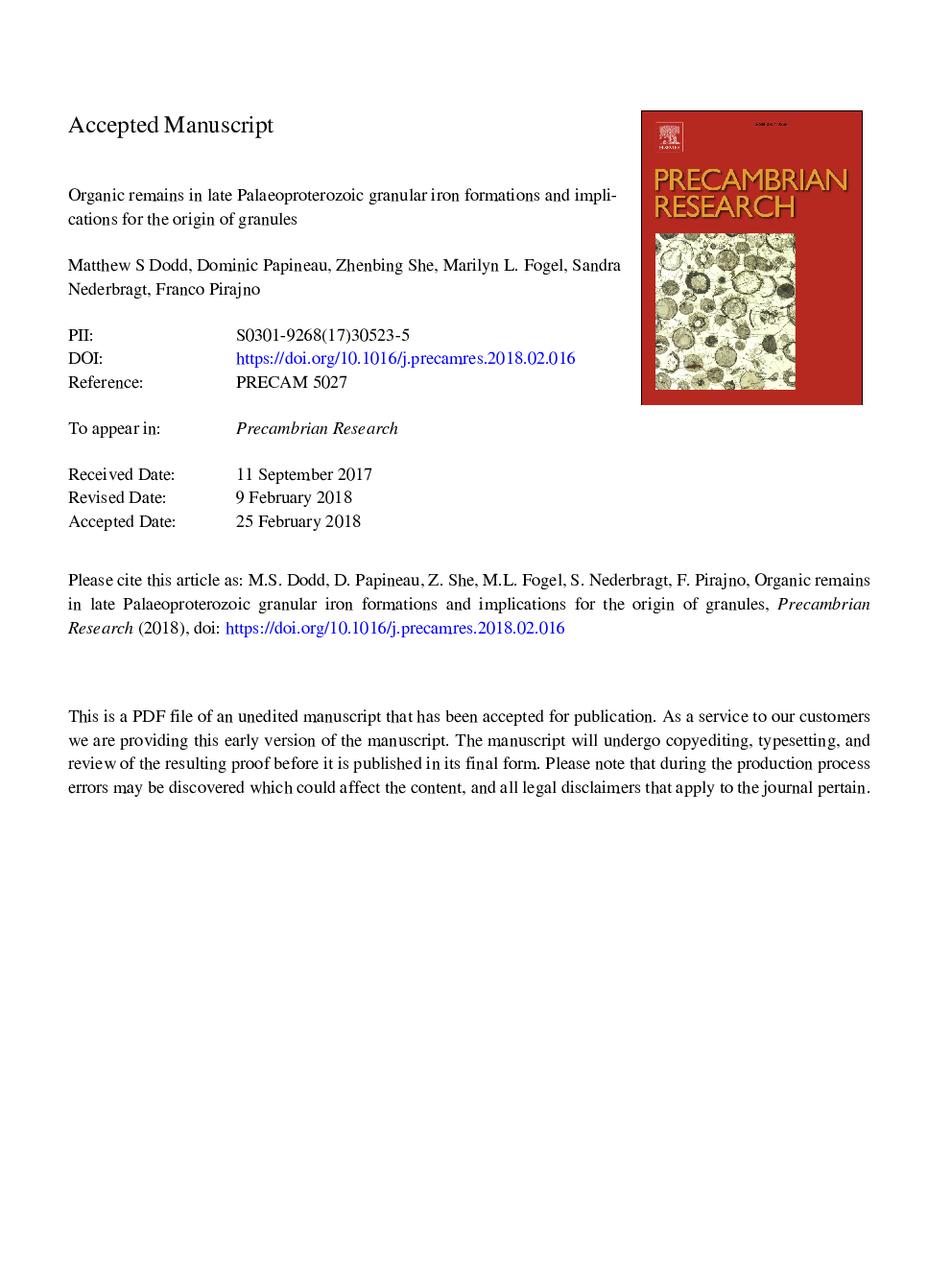| کد مقاله | کد نشریه | سال انتشار | مقاله انگلیسی | نسخه تمام متن |
|---|---|---|---|---|
| 8912568 | 1639565 | 2018 | 62 صفحه PDF | دانلود رایگان |
عنوان انگلیسی مقاله ISI
Organic remains in late Palaeoproterozoic granular iron formations and implications for the origin of granules
ترجمه فارسی عنوان
اسیدهای آلی در اواخر اواخر فرمولاسیون آهن پالئویوپروتروزیوئیک و منشاء گرانول ها باقی می مانند
دانلود مقاله + سفارش ترجمه
دانلود مقاله ISI انگلیسی
رایگان برای ایرانیان
کلمات کلیدی
تشکیل آهن پروستروئوزوئیک، میکروفوسل، ایزوتوپهای کربن، گرانول،
موضوعات مرتبط
مهندسی و علوم پایه
علوم زمین و سیارات
ژئوشیمی و پترولوژی
چکیده انگلیسی
Toward the end of the Palaeoproterozoic era, over 109 billion tonnes of banded (BIF) and granular (GIF) iron formations were deposited on continental platforms. Granules in iron formations are typically sub-spherical structures 0.2 to 10â¯mm in size, whereas concretions are >10â¯mm. Both types of spheroids are preserved throughout the sedimentological record. Their formation has typically been interpreted to originate from reworked Fe-rich sediments in high-energy, wave-agitated, shallow-marine environments. New evidence from six different late Palaeoproterozoic granular iron formations (GIF), however, suggests that some granules are the result of diagenetic reactions, in addition to other features driven by microbial processes and mechanical movements. Characteristic coarse grain interiors and septarian-type cracks inside granules, akin to those features in decimetre- to meter-size concretions, are interpreted as desiccation features from hydrated diagenetic environments where sulphate and/ or ferric iron were reduced while organic matter (OM) was oxidised inside granules. Those granules derived from sulphate reduction preserve diagenetic pyrite rims, whereas those formed via ferric iron reduction preserve diagenetic magnetite along their rims. Other diagenetic minerals including apatite mixed with OM, and various carbonate phases are commonly preserved within granules. Combined with systematically 13C-depleted carbonate, these diagenetic mineral assemblages point to the oxidative decay of OM as a major process involved in the formation of granules. Spheroidal equidistant haematite laminations surround some granules and contain apatite associated with carbonate, OM, and ferric-ferrous silicates, and oxides that further suggest these structures were not shaped by wave-action along sediment-water interfaces, but rather by chemical wave fronts and biomineralisation. Our results demonstrate that the formation mechanisms of GIF also involve microbial activity and chemically-oscillating reactions. As such, granules have excellent potential to be considered as promising biosignatures for studying Precambrian biogeochemistry, as well as astrobiology.
ناشر
Database: Elsevier - ScienceDirect (ساینس دایرکت)
Journal: Precambrian Research - Volume 310, June 2018, Pages 133-152
Journal: Precambrian Research - Volume 310, June 2018, Pages 133-152
نویسندگان
Matthew S. Dodd, Dominic Papineau, Zhenbing She, Marilyn L. Fogel, Sandra Nederbragt, Franco Pirajno,
